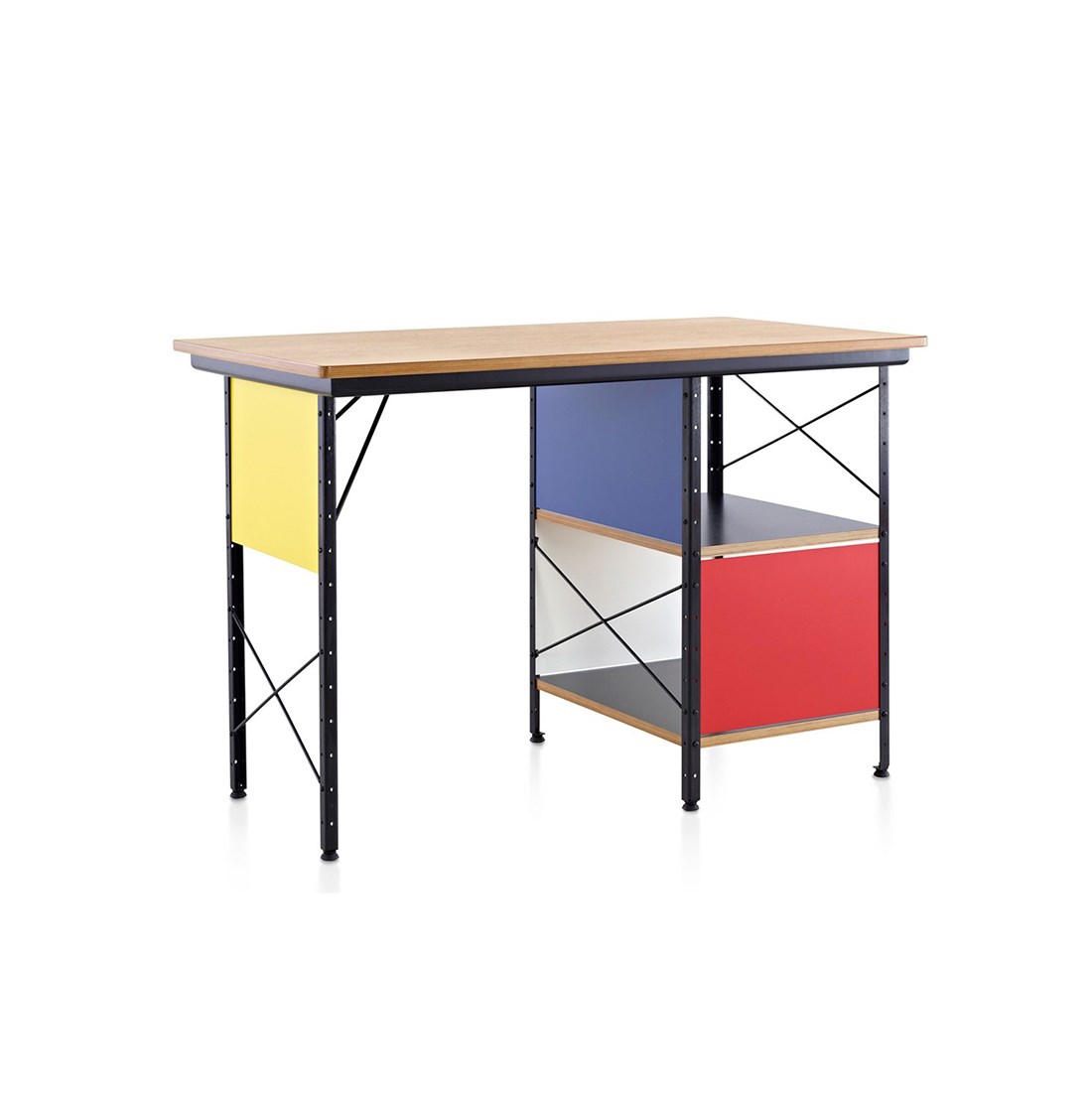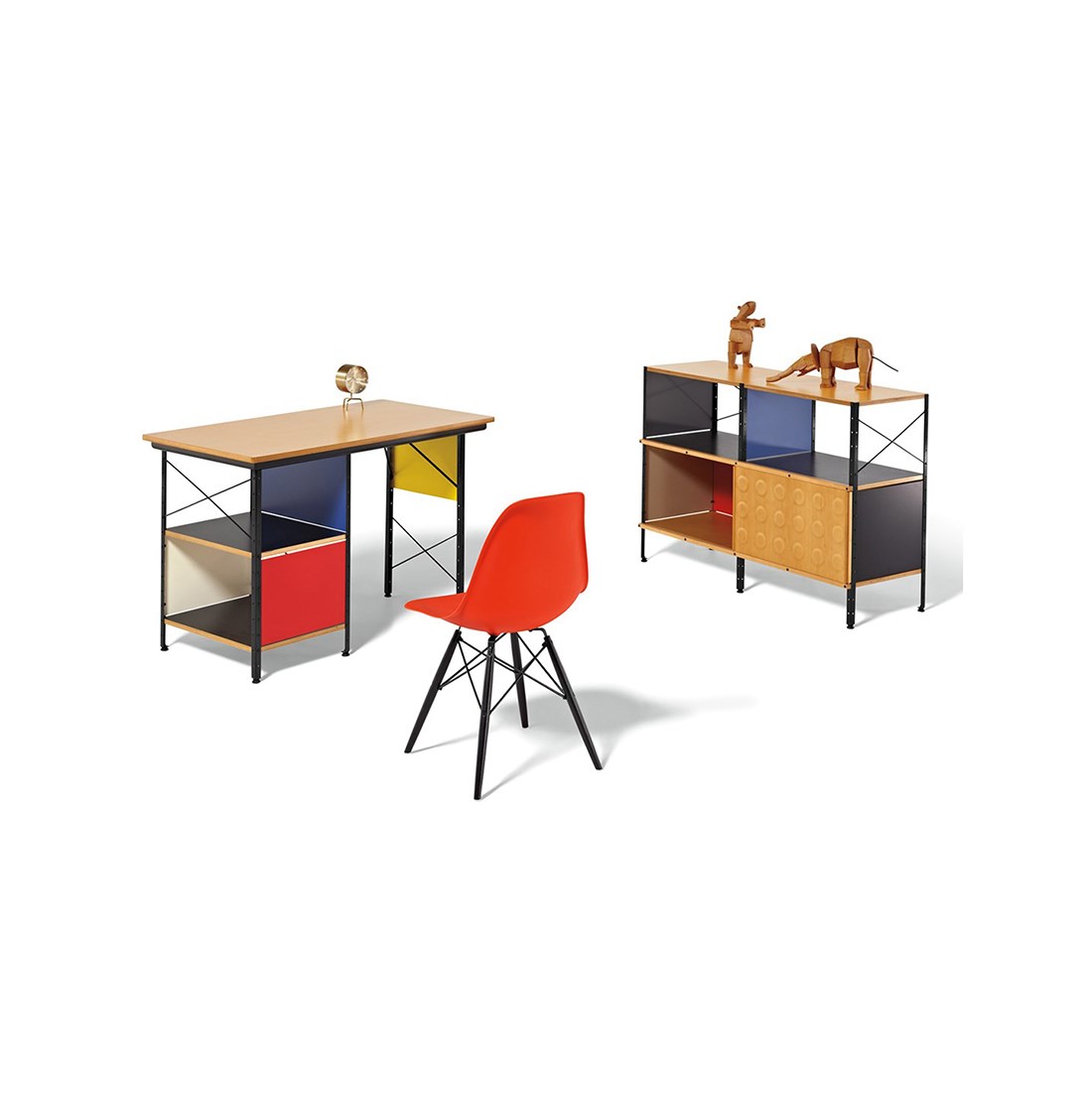Eames® Aluminium Group Chairs
- Designer:
- Charles & Ray Eames
- Brand:
- Herman Miller
We don't appear to have any products related to your search term. Please try again.
Shipping and discount codes are added at checkout.











Frame - Black

Frame - Zinc

Yellow

White

Tan

Red

Grey

Blue

Natural
Long before "modularity" and "high tech" entered the design lexicon, Charles and Ray Eames were using industrial production techniques to extend the boundaries of design and create a modern aesthetic. These desk and storage units complement each other, and each can stand alone. They provide ample storage, work, and display space. And at home or in the office, they look as striking now as they did when first introduced in 1950.
They're designed and built to meet your work surface, storage, and display needs in a very practical way. Choose the classic desk with an easily accessible storage or display area and a handy drawer on the left or right that accommodates hanging file folders. Or the new smaller desk, with open wire shelving for storage, that is ideal for today's smaller technology and smaller spaces. Desks and storage units are offered in two color schemes neutral or bright. The neutral scheme uses birch veneer with white and black accents to create a sleek, high-tech look.
The bright scheme uses red, blue, black, and white hardboard panels and surfaces that are reminiscent of a Mondrian painting. Cross-supports, uprights, and perforated panels have an industrial feel and are available in zinc plating or in new black anodized zinc plating. They give the units an industrial feel, and the dimpled plywood on cabinet fronts and plywood drawer fronts and shelves reinforce the furniture's mid-century modern appearance. Strong Uprights, cross-supports, and perforated panels are steel. Drawer fronts and shelves are smooth plywood; side panels are painted hardboard; storage unit cabinet fronts are plywood that's molded to form round dimples. Nylon foot glides are easy on floors.
Long before "modularity" and "high tech" entered the design lexicon, Charles and Ray Eames were using industrial production techniques to extend the boundaries of design and create a modern aesthetic. These desk and storage units complement each other, and each can stand alone. They provide ample storage, work, and display space. And at home or in the office, they look as striking now as they did when first introduced in 1950.
They're designed and built to meet your work surface, storage, and display needs in a very practical way. Choose the classic desk with an easily accessible storage or display area and a handy drawer on the left or right that accommodates hanging file folders. Or the new smaller desk, with open wire shelving for storage, that is ideal for today's smaller technology and smaller spaces. Desks and storage units are offered in two color schemes neutral or bright. The neutral scheme uses birch veneer with white and black accents to create a sleek, high-tech look.
The bright scheme uses red, blue, black, and white hardboard panels and surfaces that are reminiscent of a Mondrian painting. Cross-supports, uprights, and perforated panels have an industrial feel and are available in zinc plating or in new black anodized zinc plating. They give the units an industrial feel, and the dimpled plywood on cabinet fronts and plywood drawer fronts and shelves reinforce the furniture's mid-century modern appearance. Strong Uprights, cross-supports, and perforated panels are steel. Drawer fronts and shelves are smooth plywood; side panels are painted hardboard; storage unit cabinet fronts are plywood that's molded to form round dimples. Nylon foot glides are easy on floors.
Designer
Charles and Ray Eames are among the most important American designers of this century. They are best known for their groundbreaking contributions to architecture, furniture design, industrial design and manufacturing, and the photographic arts.
Brand
Herman Miller® is a pioneer in the furniture industry, an innovator whose human-centered, problem-solving approach to design has introduced new ways of living and working for over 100 years.

